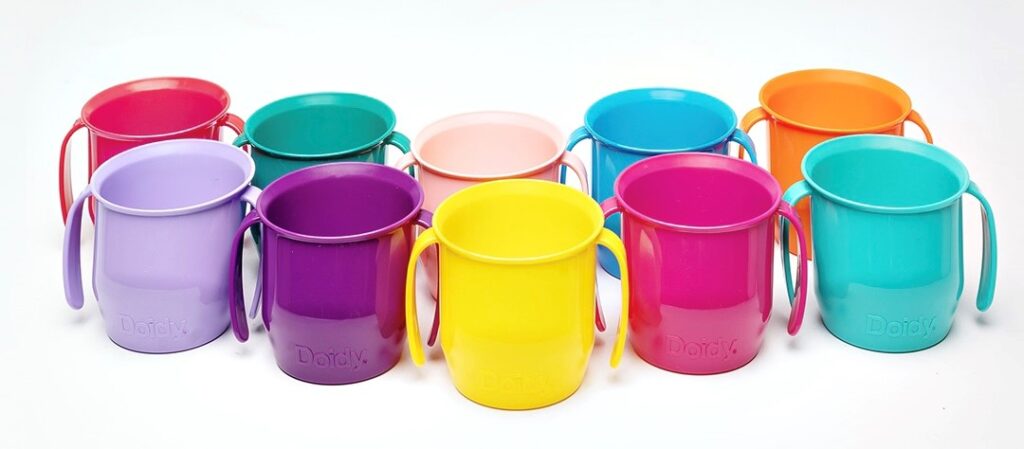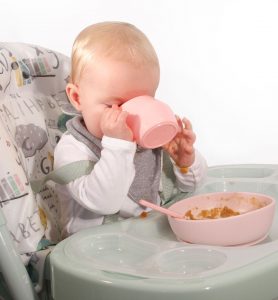How to use a Doidycup is a common question we are asked and it really doesn’t need a lot of teaching as it is the natural developmental progression of infant feeding. However, a few extra tips can’t hurt! We spoke to Stacey Zimmels, Feeding and Swallowing Specialist Speech Therapist from @feedeatspeak for her top tips.

From 6 months:
• Offer water at the end of the meal
• You can feed baby or let them do it themselves, but always encourage them to help by placing their hands on the handles
• The Doidycup lip should be placed on baby’s lower lip
• Watch that the tongue is not sticking out over the lip, it should be in the mouth
• Tilt the Doidycup and hold with water touching the lip for around a second before tipping it down
• At first your baby may open their mouth or bite on the rim, but persevere as they will quickly learn to close the lips and take a sip
• Model the same with your cup – tilt – sip – release
• As they become more proficient at taking single sips you can leave the cup on the lip for longer intervals so they can start to take sequential sips, you can also gradually reduce any support you are giving so that they become more independent
• Once they can do it themselves you can experiment with the level of the liquid in the cup and you may find less is better if they are struggling to pick it up or are playing with the water!
Tips on coughing and spluttering:
• Make sure your baby is sitting upright, not leaning forward and is well supported in their high chair with their feet on a foot rest.
• Use the single sips technique above
• If they are still struggling put a thicker liquid in the cup such as a homemade soup or smoothie and use single sips with that, then progress to sequential sips before moving to thinner liquids for more independent drinking

Introducing a Doidycup to Toddlers and older children:
• Use any of the techniques above and see what works best
• If they are still struggling you can break the task into steps and show them what to do. Praise at each stage. This can be helpful if they are playing with the water, tipping the cup out, or refusing to drink from it.
• Outside of meals, practise in a bath (no soap and before washing) or in a paddling pool or messy play tray.
Thanks to Stacey Zimmels Paediatric Feeding and Swallowing Specialist Speech Therapist and IBCLC Lactation Consultant – Find out more @feedeatspeak



